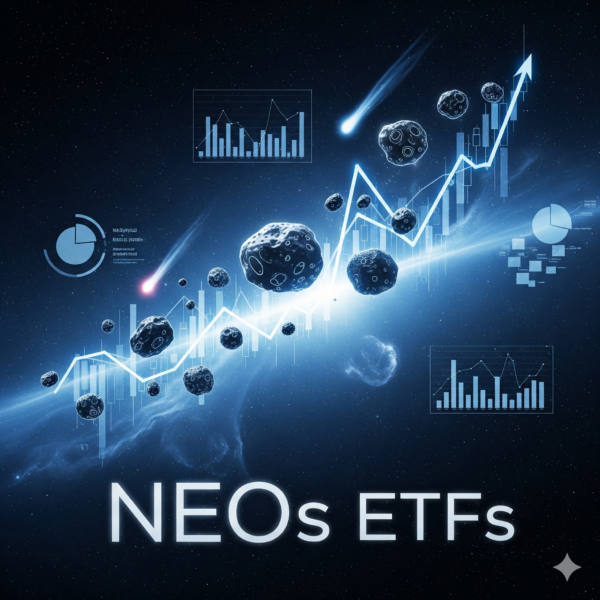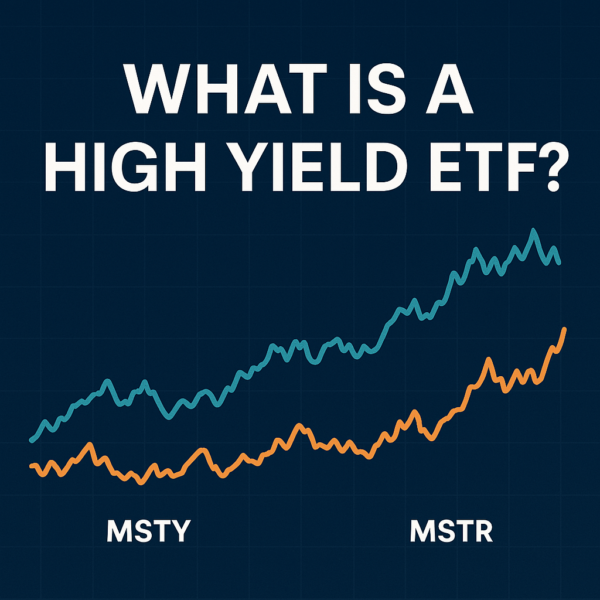Advantages of ETFs Over Mutual Funds
ETFs and mutual funds are both great “middle-of-the-road” investment products. They balance risk and reward well, and cater to investors who want to be hands-off. Yet, these funds differ in key ways. Investors interested in these products need to learn the differences and how they factor into the types of performance and returns they can expect from these vehicles.
For confident investors, ETFs become a clear opportunity to get more from your money—if you invest wisely. Here’s a side-by-side comparison of these funds and a closer look at the advantages of ETFs over mutual funds.

What is an Exchange Traded Fund?
An ETF is a type of fund that tracks the performance of other assets. ETFs can track large indices, a collection of stocks, commodities and more—it all depends on the focus of the fund. ETFs trade on exchanges under a ticker symbol, which means they’re broadly available to buy and sell. Investors don’t need to maintain a regular share purchase schedule, and can buy or sell at any time (marketable security).
ETF prices fluctuate, which means the current price is the cost of acquiring more shares. Their price comes not only from the daily buying and selling of the fund, but from the underlying assets. Some ETFs track only a handful of assets, while others track hundreds. There’s incredible diversity among ETFs—in 2020, there were more than 7,600 listed ETFs.
Pros of ETFs
- Great diversification with targeted appeal. There are thousands of ETFs to choose from.
- Very accessible. You can buy shares in an ETF on any exchange using a ticker symbol.
- Low expense ratio fees and tax advantages thanks to the indexed nature of the fund.
Cons of ETFs
- Don’t always provide great diversification—it depends heavily on the assets tracked.
- Actively managed ETFs can come with higher expense ratios that eat into ROI.
- Leveraged ETFs have the potential to lose more than they gain due to volatility.
What is a Mutual Fund?
Mutual funds pool the money of contributing members to leverage more buying power. The fund itself invests in different securities, which can include stocks, bonds, commodities and more. They’re a type of managed fund, which means an institutional investor is at the helm, directing investment decisions.
The cost of investing in a mutual fund doesn’t change on a regular basis. Instead, members contribute a fixed amount at regular intervals, which buys more shares at the current price. This is the Net Asset Value (NAV) of the fund: a measure of the fund’s net assets minus liabilities. Funds calculate NAV once per day, usually after trading hours. Mutual funds are a more pure “set it and forget it” option for many investors.
Pros of Mutual Funds
- Mutual funds are actively managed by institutional brokers, incentivized by returns.
- Small contribution amounts per person leverage into stronger buying power in the fund.
- Great stability and very low risk in mutual funds, especially over the long term.
Cons of Mutual Funds
- Higher expense ratios and fees associated with actively managed funds.
- Tax inefficiencies that can come about as the result of capital gains payouts.
- Lack of control over investments and lack of transparency into fund assets.
What Makes ETFs a Better Investment?
There are three chief factors that make ETFs and better investment over mutual funds. Specifically: market price, more control, and lower fees.
- Because ETFs trade actively, it’s possible to pay market price for shares. This allows for strategies such as dollar cost averaging, which can improve your investment returns. Mutual fund NAV stays relatively consistent from day to day, which makes dollar cost averaging difficult.
- Mutual funds may offer diversification, but that diversification is often very broad. ETFs give investors more control over the level of diversification they want. For broad diversification, you might choose an ETF that tracks the S&P 500. More specific ETFs might track companies that satisfy X, Y and Z criteria. Either way, you’re still getting a bucket approach to investing—ETFs just let you pick what’s in the bucket.
- Actively managed funds come with a load fee. So, by nature, mutual funds charge a load fee—usually 1% to 2%. Moreover, both ETFs and mutual funds come with an expense ratio: the cost of maintaining the fund. This fee can vary from tenths of a percent to more than one percent—and typically trend higher for mutual funds. In comparison, ETFs offer lower fees.
Based on these core benefits, ETFs are usually the choice for more savvy investors. They offer enough control to make decisions about your investment, yet offer protection against volatility through diversification. Low fees are always advantageous.
Opportunities for Casual Investors
Both ETFs and mutual funds are good investment vehicles for individuals who may not have the savvy or motivation to manage their own portfolio. While ETFs take a little more oversight, they also come with lower fees and more opportunities to control your investment. The advantages of ETFs over mutual funds also extend to buying and selling at your leisure, instead of participating on a defined contribution schedule.
To learn more about the most successful ETFs, sign up for the Liberty Through Wealth e-letter below. The best exchange-traded funds can help you build wealth now.
All of this isn’t to say that mutual funds aren’t a good investment. ETFs simply offer investors more say in how their money works for them. While you won’t have the constant oversight of an investment manager, you’ll get all the benefits of a targeted fund that’s diversified, low-cost and hedged against volatility.





